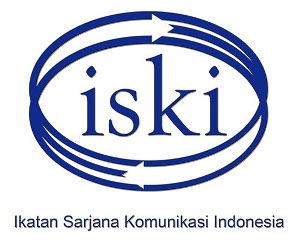KAJIAN SEMIOTIKA BARTHES PADA KARTUN MICE TAHUN 2022
Abstract
This study uses a qualitative design to collect, filter and analyze data. The subject of this research study was Mice cartoons in Kompas Newspaper in 2022. The selection of cartoons used a purposive sampling technique. Purposive sampling is sampling adjusted to the research objectives. From a number of observed cartoons, cartoons published on January 23, 2022 and March 6, 2022 were chosen as samples because these cartoons show how to express comics with issues of novelty regarding IKN (National Capital City) and the extension of the presidential term. These two issues were issues at the beginning of the year that warmed up because they were connected by political discourse ahead of the 2024 Election. IKN and the three-term president have a connection in politics. The object of this study is focused on comic analysis using McCloud's comic theory, denotative meaning and connotative meaning using Barthes' semiotic theory. The results of the study show that the denotation meaning of the Mice cartoon is a picture of the Indonesian people who are in dialogue, either dialogue between colleagues or dialogue between the people and their officials. This dialogue is presented in black and white comic panel transitions. This panel transition creates a narrative or story for the reader. The narrative can also be interpreted connotatively. The connotative meaning of Mice's cartoons shows that there is something that is discussed further in relation to the context of the discourse raised when compared to the witty visualization. There is a serious problem covered in a humorous cartoon appearance. The name of the IKN is still being debated by several groups, the issue of names is being seriously discussed, and the three-term presidential discourse is considered to be possible if the president wants it.
Keywords
Full Text:
PDFReferences
Ajidarma,Seno Gumira. 2012. Antara Tawa dan Bahaya, Kartun Dalam Politik
Humor. Jakarta :Kepustakaan Populer Gramedia.
Eco, Umberto. 2009. Teori Semiotika; Signifikasi Komunikasi, Teori Kode, Serta
Teori Produksi-Tanda. Yogyakarta: Kreasi Wacana.
Fiske,John. 2007. Cultural and Communicaton Studies; Sebuah Pengantar Paling
Komprehensip. Yogyakarta: Jalasutra.
Kaelan. 20015. Metode Penelitian Kualitatif Bidang Filsafat.
Yogyakarta:Paradigma.
Moleong, Lexy J. 2001. Metodelogi Penelitian Kualitatif. Bandung : Remaja
Rosdakarya.
Nuriarta, I. W. (2019). Kajian Semiotika Kartun Majalah Tempo Tahun 2019.
Jurnal Seni Rupa Dan Desain, 23(1), 11-15. Retrieved from
https://jurnal.isi-dps.ac.id/index.php/prabangkara/article/view/736
Nuriarta, I. W., & Bayu Artha, I. G. A. I. (2017). Bahasa Rupa Kartun
Konpopilan Pada Koran Kompas Tahun 2016. Jurnal Hasil-Hasil
Penelitian Institut Seni Indonesia Denpasar, 5. Retrieved from
https://jurnal.isi-dps.ac.id/index.php/segarawidya/article/view/191
Nuriarta, I.W. 2020. Tanda dan Makna Kartun Mice Pada Koran Kompas Edisi 8
Maret 2020. Jurnal Studi Budaya Nusantara Universitas Brawijaya. http://dx.doi.org/10.21776/ub.sbn.2020.004.01.04
Piliang, Yasraf Amir. 2012. Semiotika dan Hipersemiotika. Bandung : Matahari
Roesfi. 2013. Buku Politik Santun Dalam Kartun Karya Muhammad Mice
Misrad: Kajian Semantik Dan Pragmatik. URL: http://repository.unej.ac.id/handle/123456789/60685
Sarwono Jonathan & Lubis Harry. 2007. Metode Riset Untuk Desain Komunikasi
Visual, Penerbit Andi, Yogyakarta.
Setiawan, Muhammad Nashir. 2002. Menakar Panji Koming, Tafsiran Komik
Karya Dw Koendoro Pada Masa Reformasi Tahun
Jakarta: Buku Kompas.
Siti Maria. 2014. Analisis Wacana Humor Dalam Kumpulan Komik Serial Mice
Cartoon. Yogyakarta: Universitas Gadjah Mada. http://etd.repository.ugm.ac.id/penelitian/detail/70737
Vivian .2008. Teori Komunikasi Massa. Bandung :PT Remaja Rosdakarya
Wijana, I Dewa Putu. 2003. Kartun. Yogyakarta: Ombak.
Website
https://www.isi-dps.ac.id/artikel/transisi-panel-kartun-panji-koming/
https://www.isi-dps.ac.id/artikel/kartun-konpopilan-pada-koran-kompas-kajian-bahasa-rupa/
DOI: http://dx.doi.org/10.30813/s:jk.v17i1.4276
Refbacks
- There are currently no refbacks.
Copyright (c) 2023 I Wayan Nuriarta

This work is licensed under a Creative Commons Attribution-ShareAlike 4.0 International License.
Publisher
Editorial Board SEMIOTIKA: Jurnal Komunikasi
Department of Communication
Faculty of Social Science and Humanities
"UNIVERSITAS BUNDA MULIA"
Lodan Raya St No.2, North Jakarta 14430
Phone: +62 21 692 9090 ext. 348
Email: SEMIOTIKA@ubm.ac.id













